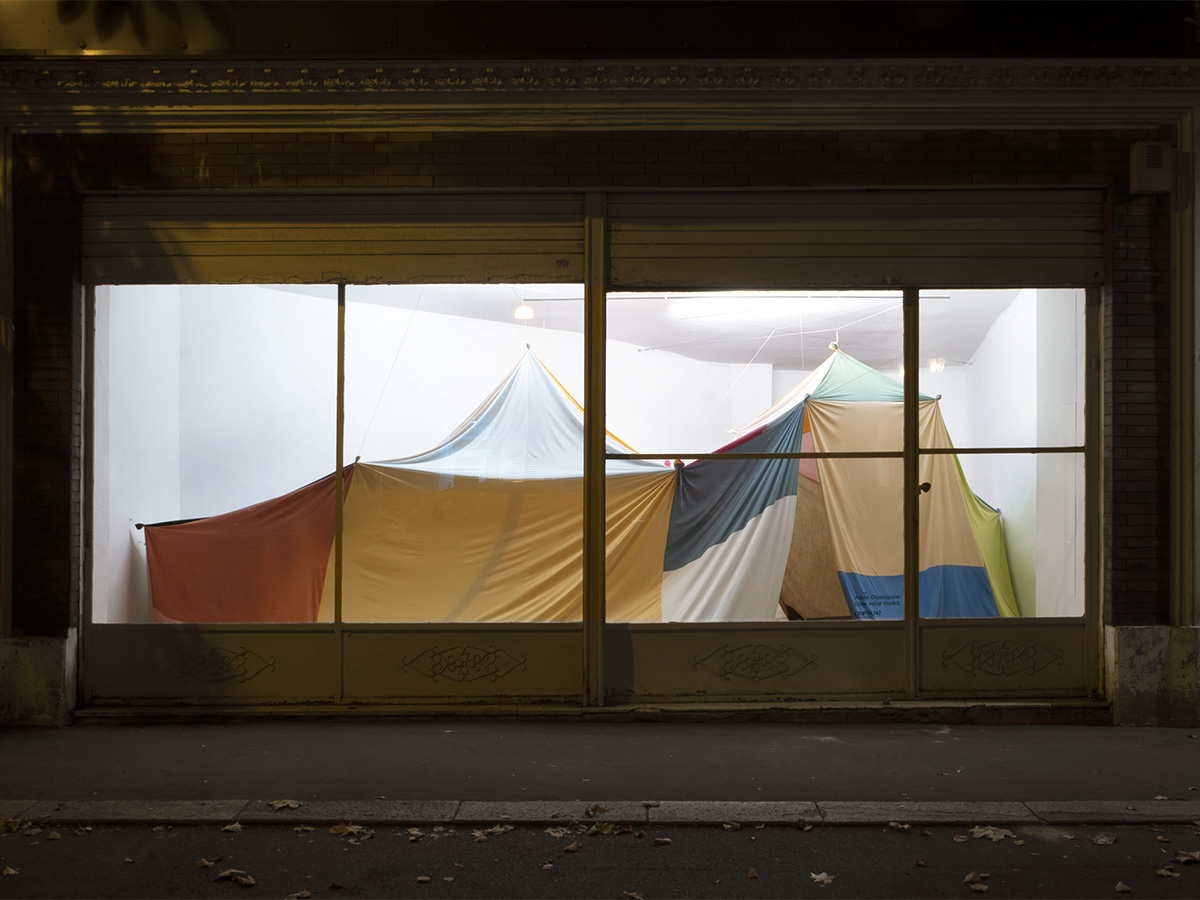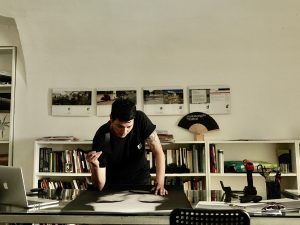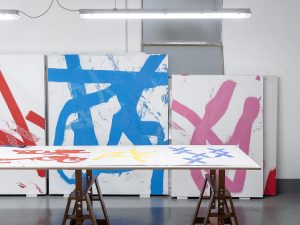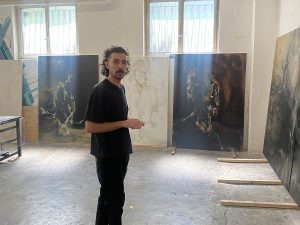Turin is a multifaceted and complex city where the self-celebrating Savoy past clashes with a post-industrial reality, characterised by waves of immigration and the resilience of an underground feeling with a calling for experimentation. For decades now, festivals, projects, and local realities have formed an underground of structured and diversified cultural activities, from cinema to music, sound, and the performing and contemporary arts. In the city, time is punctuated by more or less institutional events, in a concatenation of fixed appointments whose schedules are constantly being updated. This is why, despite its limited size, Turin makes a competitive cultural proposal, also by virtue of a famed history characterised by strong international influences.
If there is, indeed, a Turin artistic system resulting from the presence and coexistence of museum institutions, galleries and private foundations, it is also interesting to ask what room there is for the activity of realities such as non-profits and artist-run spaces. Perceived, on account of their position and attitude, as closer to the city context in which they are located, these latter restore a human dimension to the art community, contributing to the construction of broader visions of art making. This also means combining ideals of inclusiveness with projects capable of rapidly and radically absorbing moments of renewal.
The very idea of community has necessarily changed over time, and here it may be interesting to mention two independent realities of a social and political as well as strictly cultural nature. One is A.titolo, a model of community curatorship active since 1997. It was founded by a group of female curators, critics and art historians including Giorgina Bertolino, Francesca Comisso, Nicoletta Leonardi, Lisa Parola and Luisa Perlo. Believing in the role of public art and participatory processes, they have left a methodological and theoretical imprint of great importance in the city. Another important example is that of Progetto Diogene, founded in 2007 by a group of artists, including Andrea Caretto, Raffaella Spagna, Franco Ariaudo and Manuele Cerutti. It has been a breeding ground for exhibitions, talks, and international residencies for many years, often realised around their headquarters, a silver-coloured tram which still stands in the middle of a roundabout. This is, perhaps, a stationary and dislocated means of transport, but also a representative symbol of an artistic utopia and of a community that unites to make the urban landscape its own residence. This still today marks the intersection between Corso Regio, the Parco and Corso Verona, an area close to the city centre but still a backstreet one, which has in recent years attracted growing attention from non-profit spaces.
Nearby, at Via Catania 15, today stands Cripta747, a non-profit founded by Renato Leotta, Elisa Troiano and Alexandro Tripodi in 2008 to support the production of contemporary art and multidisciplinary formats. Rich on a longevity with few equals, given its fifteen years of continuous activity, Cripta747 expresses a nomadic and hybrid identity with a programme of exhibitions in non-canonical venues, research projects and participatory activities on the territory. It has shown particular interest in sound and has renewed its programming according to the different venues in which it has operated, including the basement of the Franco Noero gallery between 2013 and 2015.
Among the main operational characteristics of Cripta747, we can identify its inclination for processes (self)forming an active and receptive community, designed to function both in a local and international perspective. Data in hand, the emphasis placed on the human dimension and the ethics of the encounter, on the sharing of the process rather than on the production of works per se — together with the good fortune of their projects — has meant that many artists have moved to Turin after collaborating with Cripta747 in the Studio Programme (a project for sharing studies) or after being assigned to the Fellowship Residency Programme (a three-month residency financed by this same space).
Walking for a few minutes towards the centre, at Via Reggio 13, we come across Almanac Inn, the Turin branch of Almanac Projects, a non-profit space set up in London in 2013.
Founded by Astrid Korporaal, Francesca von Zedtwitz-Arnim and Guido Santandrea, Almanac has the appearance of a white cube and yet slips away from this definition. If its objective is to support emerging art through solo exhibitions of Italian and foreign artists, at the same time it promotes research and production residencies, also with a collective dimension, and encroaching on out-of-town territories. The development of a public programme including talks, screenings and reading groups is itself designed to involve participants in reflection on contemporary themes and theories, to give body and voice to progressive impulses and gender issues. A series of “crits” are also being prepared, designed to stimulate discussion on artistic projects in the presence of local artists, curators and critics. These may also be followed by the usual post-opening dinner, sharing Chinese food.
A different approach drives the Barriera association, based in the neighbourhood of the same name, at Via Crescentino 25, where autonomous research meets with individual participation.
Founded in 2007 as a repository of artworks by a group of Turin collectors, the space immediately became something else: a receptacle for solo and group exhibitions characterised by this venue’s industrial style. These include the projects of young curators selected at the end of their participation in CAMPO (the Fondazione Sandretto Re Rebaudengo course) and other curatorial realities, as well as the internationally important solo shows held under the banner of Artissima in collaboration with foreign galleries.
In recent years, under the direction of Sergey Kantsedal ─ who also comes from CAMPO ─ and with the assistance of Yuliya Say, there has been a strengthening of a proposal that catalyses an underground scene active in the city and that takes its cue from queer and the reinterpretation of glam, gothic and hardcore aesthetics, in dialogue with historical figures based in Turin: artists such as MRZB and Sebastiano Impellizzeri, gallery owners such as Guido Costa, and others.
Finally, the location in a peripheral district described as “difficult” is hardly of secondary importance: if on the one hand it appears to be an opportunity to reduce costs, on the other it creates a site of engagement open to all, in an area forgotten by contemporary art.
Among the many projects that have emerged in recent years, in turn renewing the city’s non-profit bona fides, we could cite Osservatorio Futura, located at Via Giacinto Carena 20. Founded as a publishing project by Francesca Disconzi and Federico Palumbo 1 September 2020, it soon became a constantly evolving exhibition space, which inherits and transforms its special interest in writing and critical engagement into exhibition projects that interpret the space as a tool for multidirectional networking.
The physical space at the opening, at the height of the pandemic, produced thirteen exhibitions by emerging artists, some with titles that openly state its community bases, such as “We invited some artists into the space”. The group vocation — within the same walls as the now-closed Spaziobuonasera, from which it perhaps inherits a youthful character — is however also drawn to pay attention to what happens beyond its own circle. The internet site osservatoriofutura.it is a place of exercise for art critique, which has generally been put on the sidelines in recent years, and the passion for publishing carries over into numerous publications: Fanzine, a magazine of around sixty pages per issue, in which articles and interviews are published; Speciale +, and books such as Centro di gravità temporaneo, vol I, edited by Carlo Corona, which has to do with non-profit and artist run-spaces in Italy. This is a commendable work, with the only flaw that there is no version in English, the lingua franca of art.





